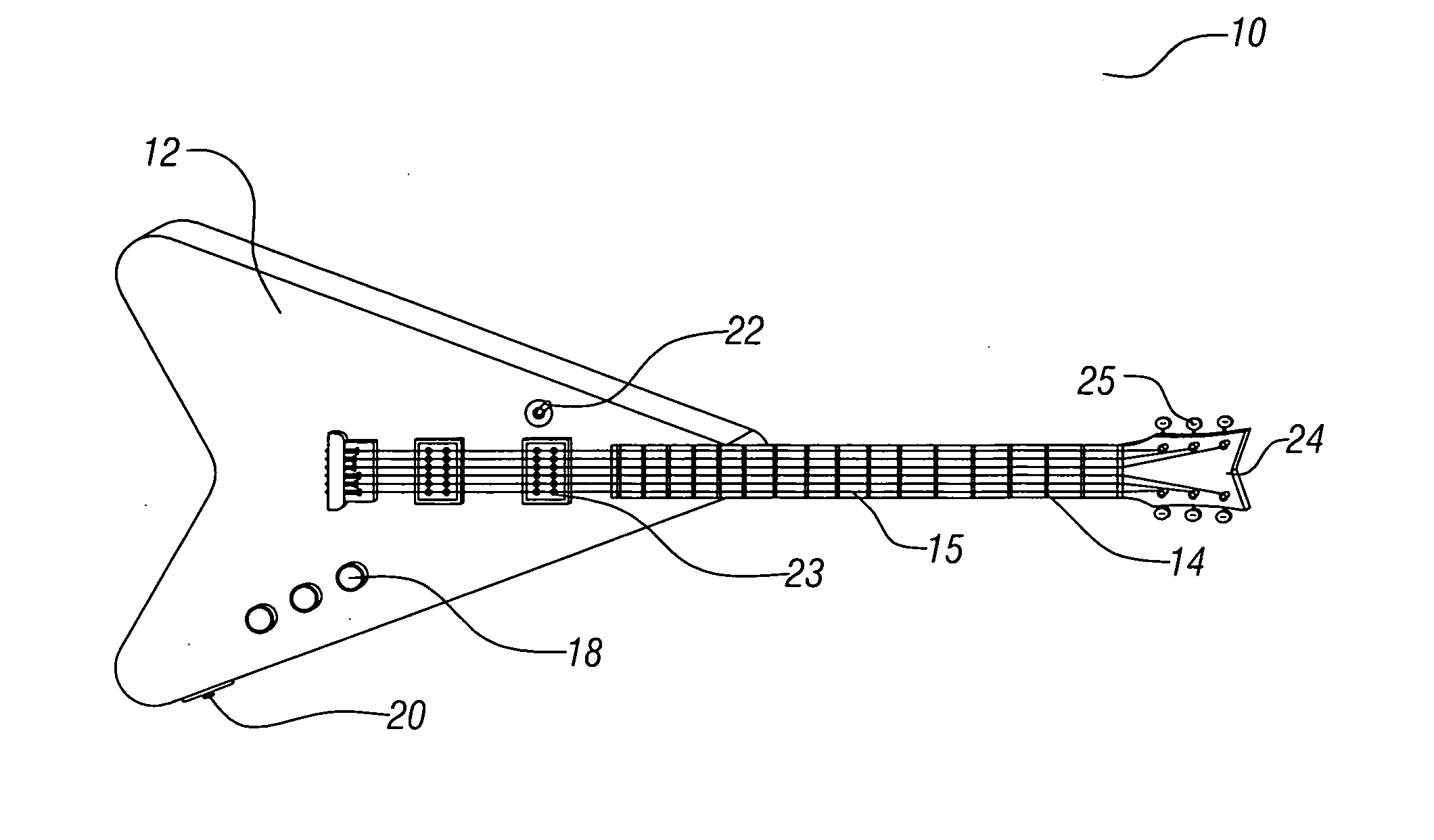Musical instruments and components manufactured from conductively doped resin-based materials
- Summary
- Abstract
- Description
- Claims
- Application Information
AI Technical Summary
Benefits of technology
Problems solved by technology
Method used
Image
Examples
Embodiment Construction
[0042] This invention relates to musical instruments molded of conductively doped resin-based materials comprising micron conductive powders, micron conductive fibers, or a combination thereof, substantially homogenized within a base resin when molded.
[0043] The conductively doped resin-based materials of the invention are base resins doped with conductive materials to convert the base resin from an insulator to a conductor. The base resin provides structural integrity to the molded part. The doping material, such as micron conductive fibers, micron conductive powders, or a combination thereof, is substantially homogenized within the resin during the molding process. The resulting conductively doped resin-based material provides electrical, thermal, and acoustical continuity.
[0044] The conductively doped resin-based materials can be molded, extruded or the like to provide almost any desired shape or size. The molded conductively doped resin-based materials can also be cut, stamped...
PUM
 Login to View More
Login to View More Abstract
Description
Claims
Application Information
 Login to View More
Login to View More - R&D
- Intellectual Property
- Life Sciences
- Materials
- Tech Scout
- Unparalleled Data Quality
- Higher Quality Content
- 60% Fewer Hallucinations
Browse by: Latest US Patents, China's latest patents, Technical Efficacy Thesaurus, Application Domain, Technology Topic, Popular Technical Reports.
© 2025 PatSnap. All rights reserved.Legal|Privacy policy|Modern Slavery Act Transparency Statement|Sitemap|About US| Contact US: help@patsnap.com



